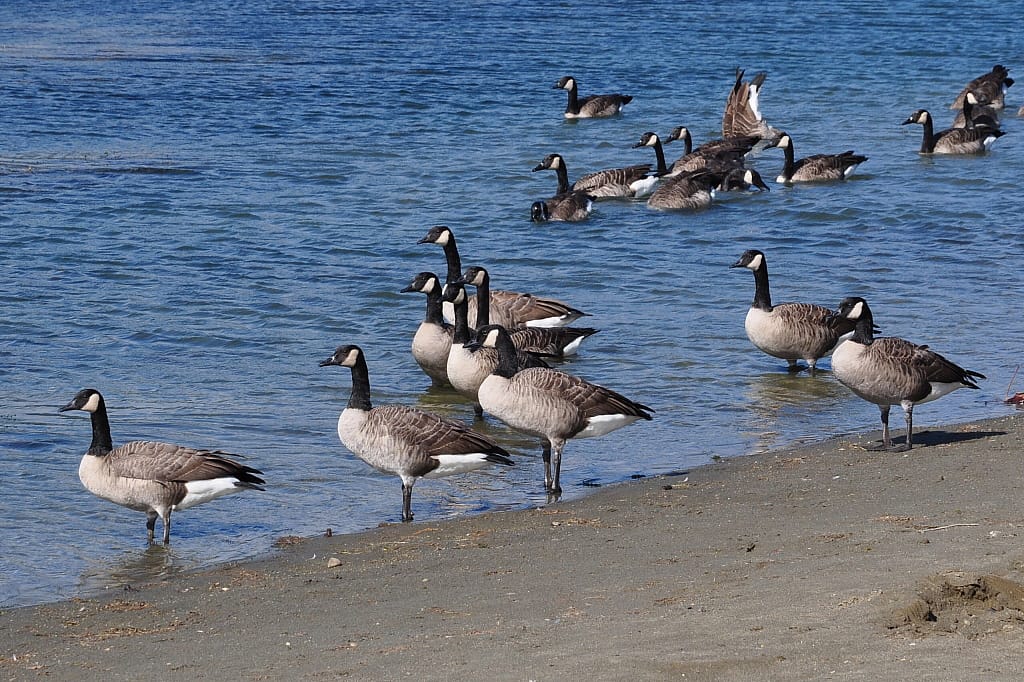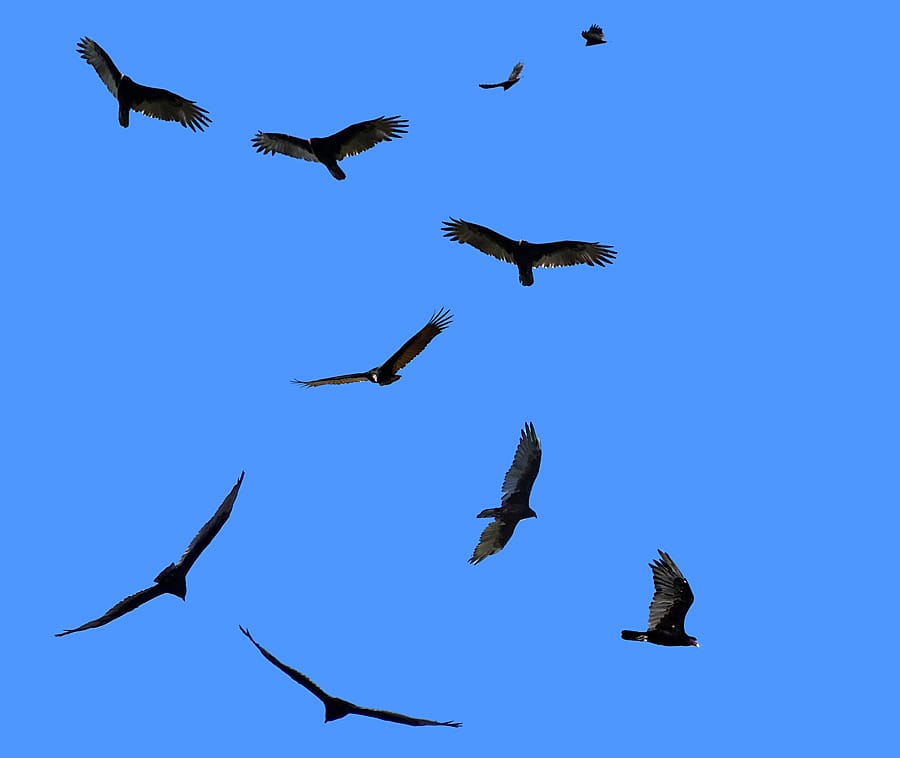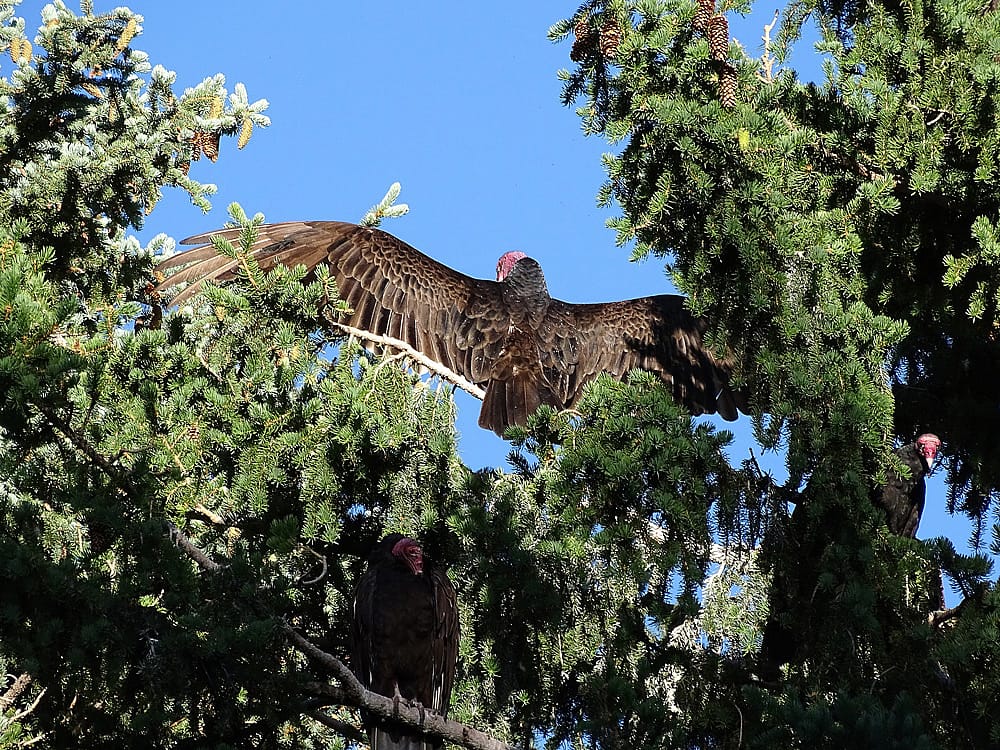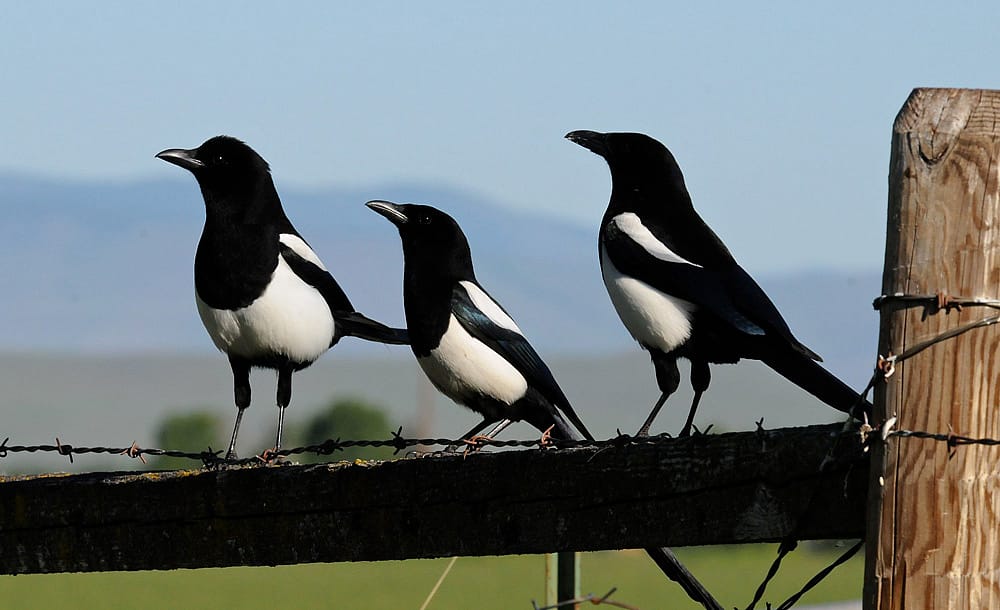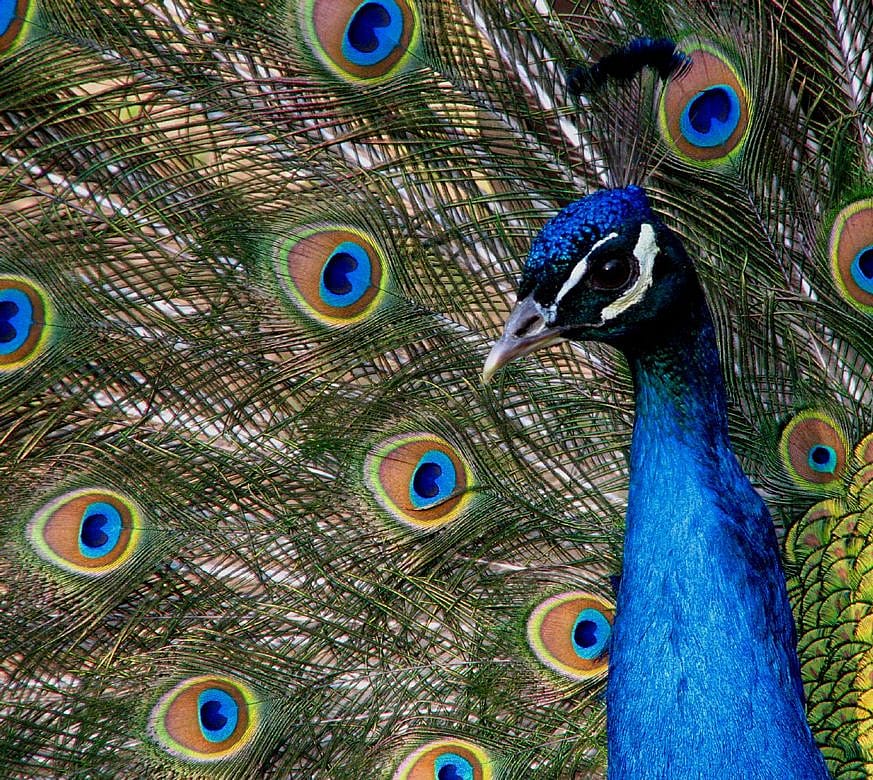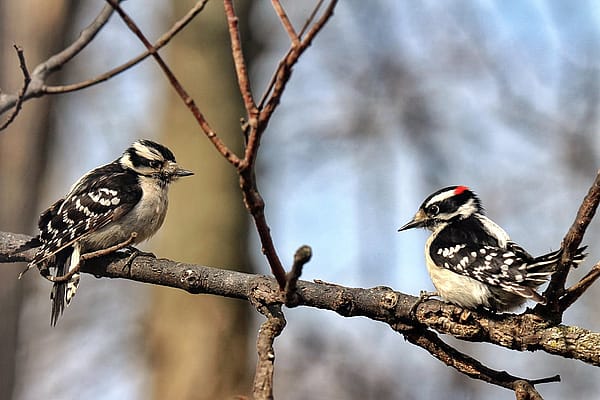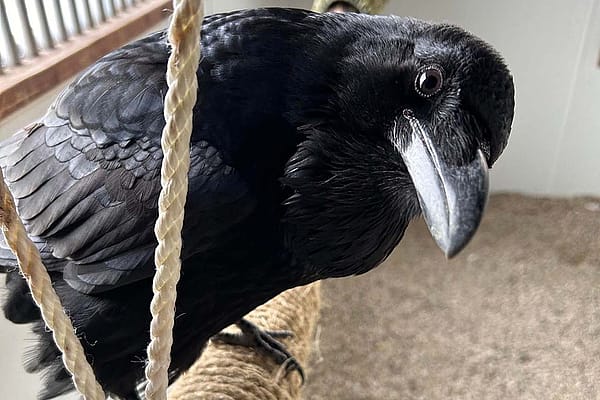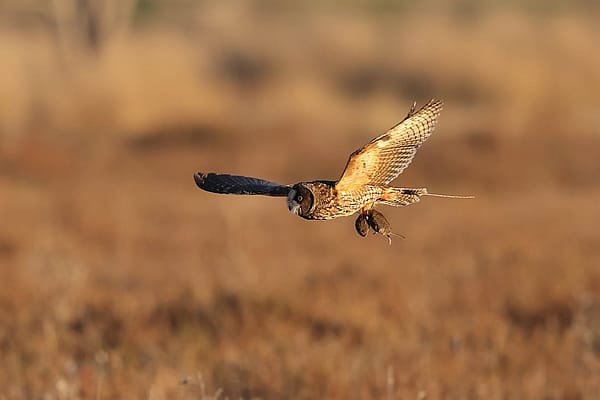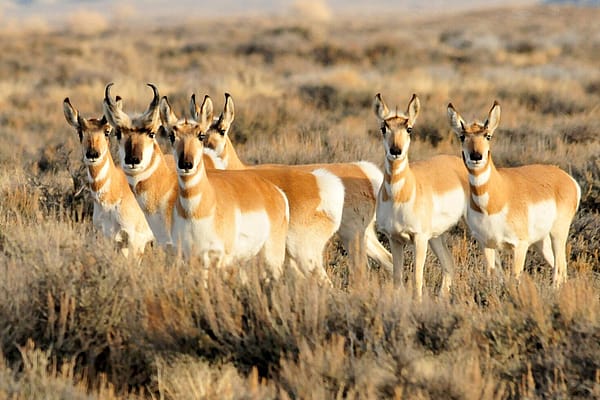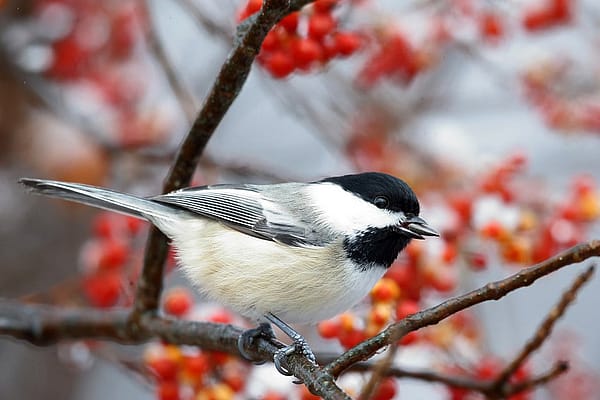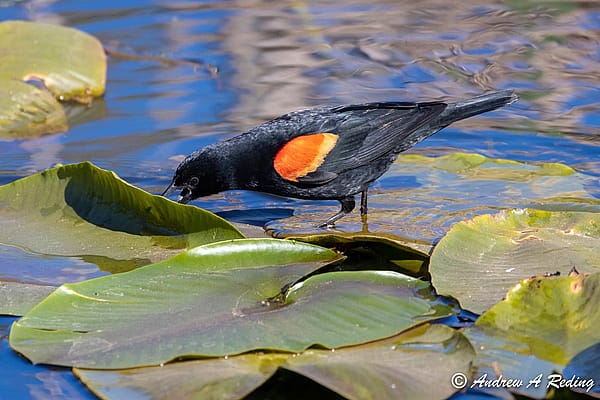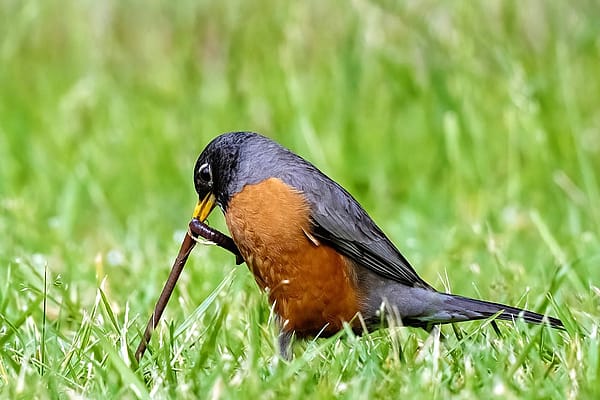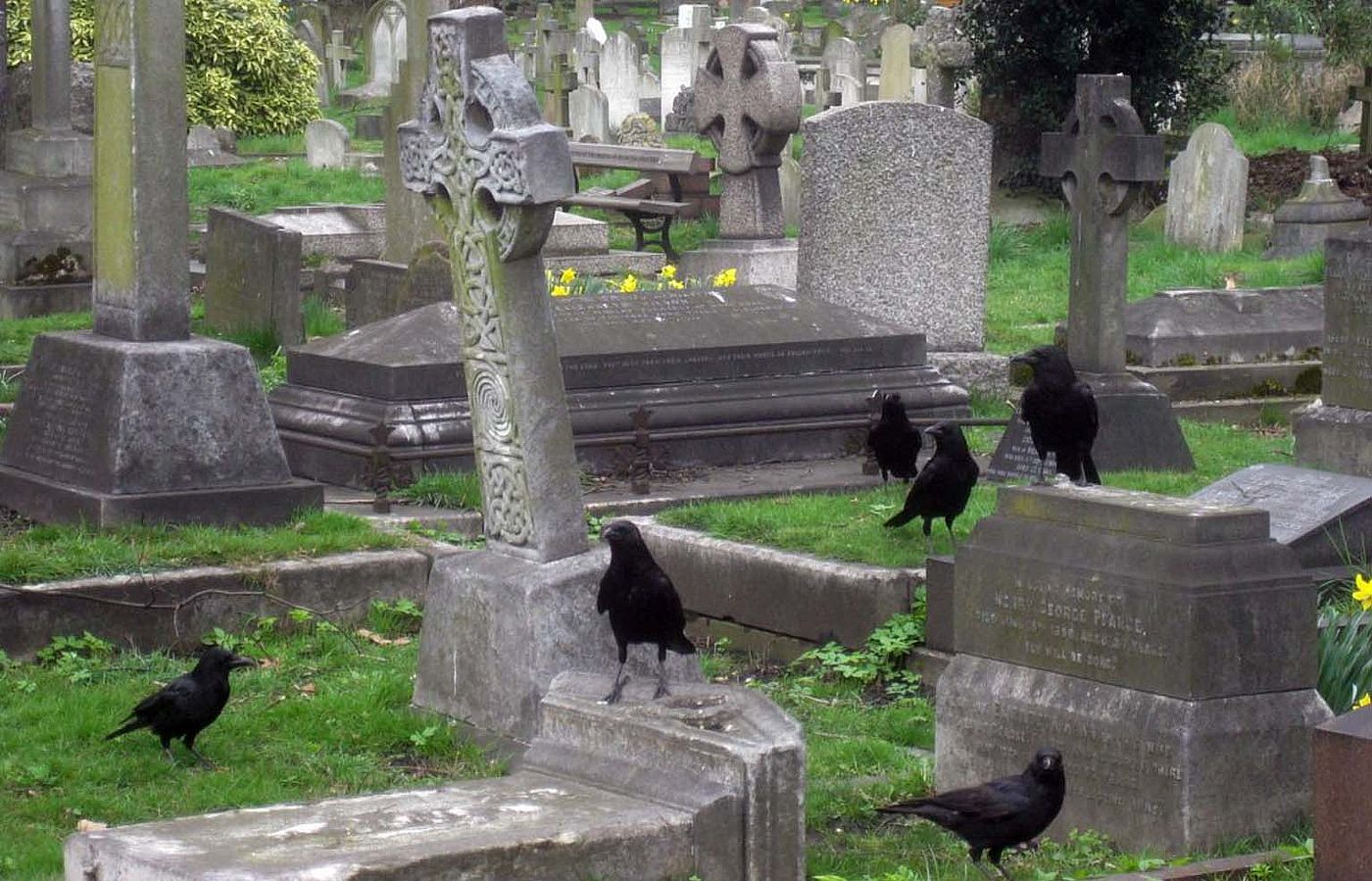
What Do You Call a Group of Birds?
When I was younger, if you had asked me what you called a group of birds, I would have promptly responded, “A flock.” The answer, however, is much more fun and interesting than that. There are many nonscientific names for groups of birds. Sometimes they are poetic, sometimes whimsical and some group names are more commonly used than others. While many of the names may have originated as hunters’ terms, Michael Quinion, a contributor to the Oxford English Dictionary, states many were originally based on zoological observations. Some even date back as much as 500 years! Here are my six favorites…
1) I discovered there were other names for groups of birds when I first heard geese called a “gaggle of geese.” Groups of geese, however, are only called a gaggle when they are on the ground or in the water. In the air they are a “skein.” I found two sources stating that geese are called a gaggle, as the word is imitative of the noise they make. The word is derived from the Middle English term gaggle, which stems from the Dutch word gagelen, meaning to cackle.
2) A group of vultures on the ground or perched in trees is called a “venue.” If they are circling on thermals of hot air, however, they are referred to as a “kettle.” This is because they resemble the rising bubbles in a boiling pot of water. However it isn’t just vultures that are called a kettle – groups of circling hawks may also be referred to in this way.
3) One of the more interesting, and pretty familiar, group names is a “murder” of crows. There are several different explanations for the origin of this term, primarily based on old folk tales and superstitions. For example, there is a folktale that crows will gather and judge another crow that had transgressed in some way. If the crow is found guilty, it will be executed by the flock – a murder of crows. Throughout history, many people have viewed the appearance of crows as an omen of death. Crows are scavengers and are generally associated with dead bodies (on battlefields and in cemeteries, for example). It was also thought that crows circle in large numbers above sites where animals or people are expected to soon die. The term “murder of crows” reflects a time when groupings of many animals were given colorful and poetic names and that may have a major bearing on the name.
4) Many owl species are solitary, coming together only during breeding seasons. On the occasions when owls are seen together, the group is called a “parliament.” Owls have long been described as wise animals. In Greek mythology, the owl is the symbol for Athena, the goddess of wisdom, and therefore set upon a pedestal, much like government officials.
5) The term, “tidings of magpies,” may have been influenced by an old superstition stating the number of magpies a person sees determines if they will have bad luck or not. In British folklore, seeing one magpie was a sign of bad luck. In Northern Ireland and Scotland, if one greeted a lone magpie it was considered helpful to ask about the health of the missing “Mrs. Magpie.” This is to pretend that there are actually two birds in the area, avoiding the bad luck of meeting just one. In the British isles, there is an old children’s nursery rhyme that has a number of variations that describes how magpies bring tidings. One short version goes like this: One for sorrow, two for joy, three for a girl, four for a boy, five for young, six for old, seven for a secret never told.
6) A group of peacocks is called an “ostentation.” Since ostentation means a pretentious or conspicuous show or display, it is easy to see why this name may fit the showy peacocks.
To check out a few other interesting group names, see the partial list on the Auburn Bird banding Organization’s web page at:
http://www.auburnbirdbanding.org/gaggle.htm
Photo credits:
A gaggle of Geese by Albert Lynn, Attribution-NonCommercial-NoDerivs 2.0 Generic Deed, https://www.flickr.com/photos/istargazer/
A Kettle of turkey Vultures and Venue of Turkey Vultures by author, Anne Hay, https://www.flickr.com/photos/157982666@N07/30500967928/in/album-72157699189720901
Cemetery crows by Matt Brown Attribution License, https://www.flickr.com/photos/londonmatt
Parliament of Burrowing Owls by Larry Jordan, Attribution-NonCommercial-ShareAlike 2.0 Generic Deed, https://www.flickr.com/photos/soaringfalcon/
Tidings of Magpies by Eugene Beckes, Attribution-NonCommercial-ShareAlike 2.0 Generic Deed, https://www.flickr.com/photos/61210501@N04/
Peacock by Pierrette Wiseman, Attribution-NonCommercial-NoDerivs 2.0 Generic Deed, https://www.flickr.com/photos/pjboudreau/
Written By
Anne Hay
Anne Hay has a Bachelor's degree in Elementary Education and a Master's in Computers in Education. She spent most of her working years teaching third grade at Livingston School in Cody, Wyoming. After retiring she began doing a variety of volunteer work for the Buffalo Bill Center of the West’s Draper Natural History Museum. Anne loves nature and has a concern for the environment. She believes that educating the public, so that they will have a better understanding and appreciation for the natural world, is very important. Because of this belief, volunteering at the Center is a perfect fit. She spends time in the Draper Lab, observing eagle nests for Dr. Charles Preston’s long-term research project on nesting golden eagles, writing observation reports of raptor sightings in the Bighorn Basin, and working with the Draper Museum Raptor Experience. Anne states that, “Having a bird on my glove, is one of my all time favorite things in life.”
